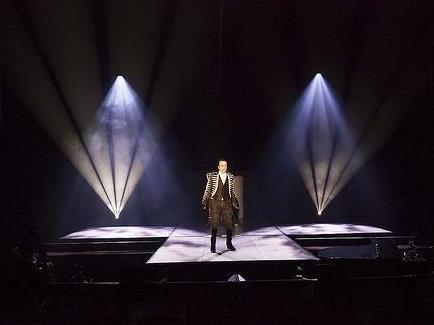Stage design for Little Bird by Geoff Cobham, winner of 2015 Helpmann Award for Scenic Design
Performance designers recognise that design, ironically, has something of an image problem. In common parlance the word itself has negative connotations: ‘designer furniture’ is the most grossly slick, ‘designer jeans’ the most over-embellished, ‘designer babies’ unnaturally perfect and ‘designer gardens’ feature—features.
Historically designers have been seen to bestow superficial rather than core value, to add (unnecessary) attributes to provide the cache of the newly desirable. Designers of all stripes talk about this perception.
Applied to theatre this attitude sees the design as peripheral to the main act—window dressing the performance rather than intrinsic to it. After all you don’t really need that costume or set design, do you? Isn’t that what Peter Brook was saying—with the title of his seminal work The Empty Space? Well, actually no, Brook was very respectful of the role of the designer. He appreciated the way a production could give his intention concrete form through the design process. And most theatre practitioners I have met over my career feel as he did: directors, actors, dancers, set builders and costume makers, producers, production managers and stage managers all seem to understand and respect what the designer can bring to the production.
But even these theatre insiders do not see, and therefore do not fully understand everything the designer does, because the designer’s role is spread across so many aspects of theatre-making and they each see only part of it. The set builder who sees the designer in the workshop resolving a construction detail does not see them in the rehearsal room responding to a performer’s needs around the use of a prop; the stage manager sees the designer at the production desk helping to heighten the atmosphere and focus of every scene through the plotting of ‘lighting states’ but does not see them juggling the budget to get the best value from the production dollar; the production manager sees this but does not see the hours, days, weeks of intense exploration with the director or choreographer to develop a concept for the production. The director sees most of this, but does not see the way in which the designer leads the creative vision of the production through the costume, prop and set-building process.
An overview of contemporary Australian theatre writing in newspapers, blogs, radio interviews and journals reveals how little our arts journalists see. While now the design will usually be mentioned, it is almost always in terms of aesthetics; only occasionally will it be discussed in terms of how it works, even less often in terms of how it feels, and rarely if ever in terms of how it contributes to the production’s meaning.
It is exceptional for the design to be really ‘seen’—to be understood for more than its decorative surface. Thematic, narrative or structural choices and issues of form and genre are understood to be choices for the writer; conceptual, interpretational, stylistic and semiotic choices are seen to be those of the director; the interpretation and development of role and character that of the performer; and the management of the creative vision of the production from page to stage that of the producer. The centrality of the designer in all of these aspects is barely recognised.
Much of this ignorance is, I think, relatively benign. What I find harder to accept is the indifference, or at least failure to engage of too many arts leaders and administrators towards the work of the designers they employ. Designers tell of artistic directors in major companies who are ‘too busy’ to attend design presentations, who rarely set foot inside the set and costume workshops where the design is being realised, or who routinely neglect mention of the design contribution in public acknowledgements. My own extreme experience of this attitude was of an artistic director who, over the three years that I worked as costume designer on the 2004 South Australian Opera Ring Cycle, not once initiated a conversation with me about my work. Some of this senior management lack of interest might be explained as trust in their directors to communicate with the designer: but in neglecting their own involvement with the designer and their process they turn their backs on a large part of the creative life of their company.
Designers can do more to engage with the companies that employ us too. We are up for it.
This article is an extract from Stephen Curtis’s Platform Paper, The Designer: Decorator or Dramaturg? published today by Currency House.





